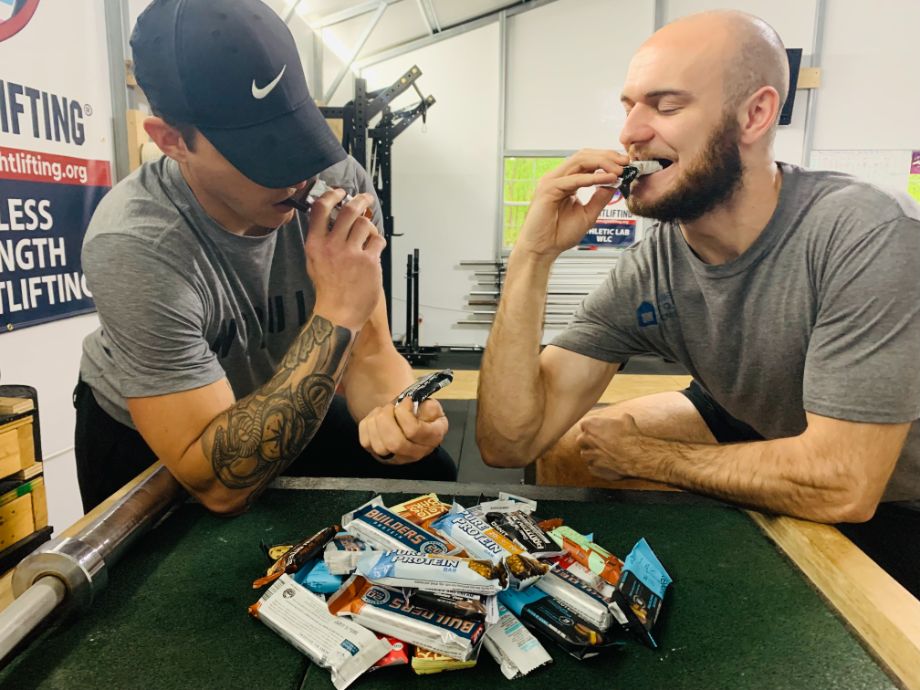We test and review fitness products based on an independent, multi-point methodology. If you use our links to purchase something, we may earn a commission. Read our disclosures.
Out of the three macronutrients, protein is the one macro vital to maintaining or building muscle mass. With that said, it can be pretty tough to make sure you’re getting enough protein each day. Whether it’s from constantly being on the go, or not knowing which foods are the best sources of protein, getting enough protein to reach your goals can be demanding.
I talked with Meagan O’Connor, RD—the sports dietitian for Team USA’s Olympic weightlifting team—about tips and tricks on how to get more protein. Her input, along with peer-reviewed research, helped me compile this guide of ways to incorporate high-protein foods into your diet and up your protein intake, all to help meet your daily macro quotas. Read on to find ways to incorporate higher protein quantities into your diet.
Medical disclaimer: This article is intended for educational and informational purposes only. It is not intended as a substitute for medical advice. For health advice, contact a licensed healthcare provider.
1. Log Your Protein Intake
First off, and possibly most importantly, you’ll need to log or track how much protein you consume throughout the day. While I know this isn’t always the easiest task for some (myself included), it’s worthwhile to even track it for a few days, just to see if you’re meeting your daily protein needs.
How much protein do you need? It will mostly depend on your goals, but most reputable nutrition and fitness organizations suggest a number above the RDA (recommended dietary allowance) of 0.8 grams of protein per kilogram of body weight. These sources1 recommend between 1.2 and 2.0 grams per kilogram per day to best support muscle recovery and athletic performance. Still, some people may need more or less protein based on age, activity level, and more.
While it may feel like we’re getting enough protein and other nutrients, tracking our foods can make it obvious where we may have some gaps in our diet. Logging your protein intake is a great way to see how much protein we’re lacking for our goals, and how much to add to our daily intake.
2. Have Protein at Each Meal
An easy way to get extra protein throughout the day is to ensure you have a high-protein food at each meal. Having eggs at breakfast, and some sort of animal protein for lunch, dinner, and any meals in-between is an easy way to ensure you’re getting a good amount of protein.
Not only is this ensuring that you get enough protein throughout the day, it’ll also help you utilize protein more efficiently in your body. Meagan says, “Your body doesn’t store amino acids—the building blocks of protein—in the same manner that it stores glucose or fat.” So unlike fats and carbs, we need to refuel our body with protein to get essential amino acids.
Meagan suggests having a meal or snack every 3 to 5 hours, including between 0.25 to 0.3 grams of protein per kilogram of bodyweight. This will come out to hit that suggested range of 1.2 to 2 grams per kilogram per day.
The International Society of Sports Nutrition2 recommends similar numbers, which come out to around 20 to 40 grams of protein per meal (0.25 to 0.4 grams per kilogram of bodyweight).
3. Supplement with Protein Powder
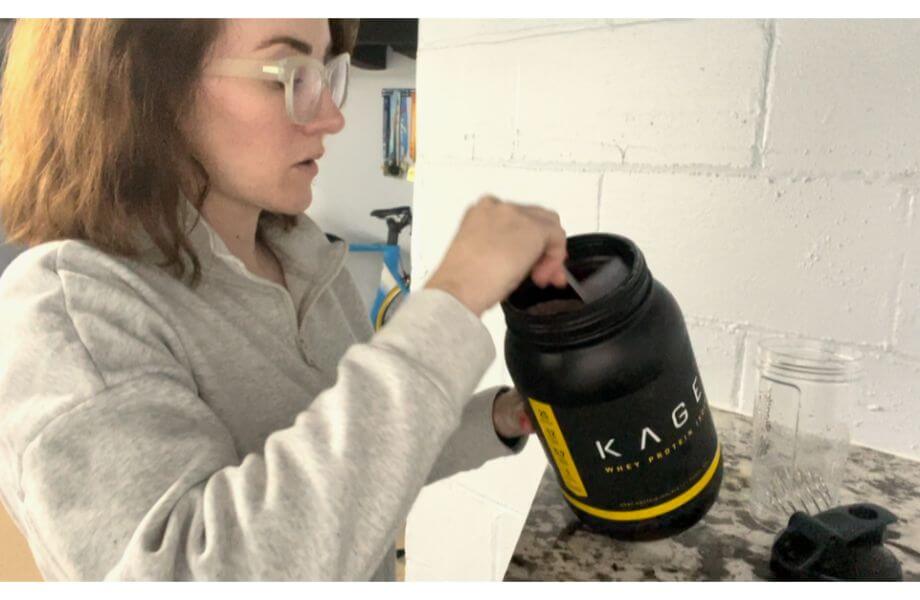
Even with a protein source at every meal, it can be demanding to get enough protein to build or maintain muscle. In this case, supplements can help out. If you’re constantly on the go, mixing a quick protein shake can help boost your daily intake for the day. The amount of protein in a supplement will depend on the type and other content, but the best protein powders tend to have between 20 to 30 grams of protein per serving.
RELATED: Different Types of Protein Powder
4. Meal Prep
Another time-saver that’ll aid in getting the right amount of protein throughout your day is to spend a bit of time early in the week meal prepping. Taking the time to prepare your meals for the week makes it a lot easier to grab your source of protein when day-to-day life starts getting hectic. You can prepare a large portion of protein like chicken breast for meals, and store the rest in the fridge to have as snacks or additional meals throughout the week.
5. Choose Quality Proteins
When consuming a high-protein diet, it’s important to make sure you’re choosing quality proteins for the majority of your protein intake. Unless you’re vegan, a good portion of protein will come from animal sources, such as poultry and beef. However, fatty meats can be rich in saturated fats, which have been shown to raise cholesterol as well as the risk for heart disease.

For meat, try to pick lean options when you’re able, like chicken breast, lean beef, or fish—which has a good dose of omega-3s, healthy fats shown to lower triglycerides and improve heart function, according to a study from 20203. For the bacon lovers out there, Meagan suggests changing out the bacon with chopped thick-cut ham to reduce the saturated fats in your diet.
For vegetarians and vegans, a good amount of protein intake will come from plant-based proteins. While these can be great sources of this muscle-building macro, it’s important to know that most plant proteins aren’t complete proteins, meaning they don’t provide all nine essential amino acids needed for a diet. So be mindful to mix and match those plant proteins to provide all essential amino acids, like brown rice or quinoa.
6. Have a High-Protein Breakfast
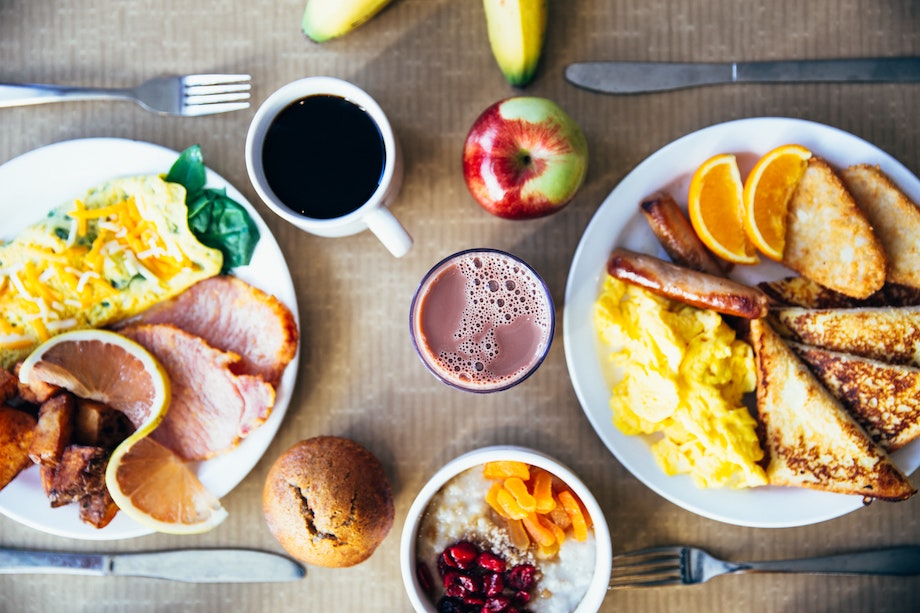
There are a lot of breakfast foods that are high in carbohydrates and low in protein: cereal, fruit, toast, and oatmeal, to name a few. Switch some of these foods out with protein-rich foods. Here are a few foods and ideas you can use to spice up your morning protein intake:
- Hard-boiled eggs: Another breakfast staple, eggs are full of protein, as one large egg can contain 6 grams of protein, according to FoodData Central4, the database of the USDA. You can prepare eggs in lots of ways, but hard-boiled eggs are convenient and simple if you’re in a rush.
RELATED: How Many Grams of Protein in an Egg
- Oatmeal: While primarily a carbohydrate, Meagan suggests making oatmeal protein-rich by adding protein powder, or even cottage cheese—the latter will add 11 grams in a 3.5-ounce serving4.
- Pancakes: Protein powder can be added to pancakes as well, making them a great addition for a breakfast food rich in protein. You can add the protein to your pancakes, or search the internet for a protein pancakes recipe to try out.
- Coffee: Yet another common way to add some protein to your morning routine is adding protein powder to coffee. Make sure to use an unflavored protein, or even a coffee-flavored powder.
7. Add Protein Powder to Sweet Treats
Speaking of adding protein powder to foods, you can do the same with baked goods, adding protein to your favorite muffin, brownie, or cookie recipe. In the same way, you can add unflavored protein, or experiment with different flavors to create a richer taste.
8. Incorporate Protein in Your Snacks

Don’t just go for chips when you have cravings in between meals. Try to pick some high-protein snacks to curb your appetite. Some of Meagan’s recommendations for snacks high in protein include:
- Jerky: Beef sticks or jerky (without added sugars, Meagan notes) can be a quick and easy way to add protein in between meals. A large 20-gram piece of beef jerky can have over 6 grams of protein in it4. For a leaner snack, you can also try turkey jerky.
- Protein bars: A quick way to snack on protein is with a protein bar. The best protein bars tend to have between 10 and 20 grams of protein in a bar, and should have a strong nutrient profile; look out for too many added sugars and artificial ingredients.
- Nuts: Although predominantly filled with healthy fats, tree nuts like almonds, pistachios, and more are also good sources of protein. A serving of 3.5 ounces of almonds or pistachios has 20 grams of protein each. You can top salads, Greek yogurt, or oatmeal with chopped nuts for a quick protein boost as well.
- Nut butters: Butters made from tree nuts—like peanut butter or almond butter—can be a fine source of protein for snacks as well. Again, although predominantly fat, these butters can also pack a decent amount of protein; a 3.5-ounce scoop of peanut butter packs 24 grams of protein (plus nearly 50 grams of fat)4. If you’re being conscious of your fat intake, then this may be a snack to refrain from, or at least keep in moderation.
RELATED: High-Protein Low-Fat Foods
9. Add Egg Whites
If you’re worried about the cholesterol of an egg, use egg whites instead, which are still filled with protein but have less cholesterol and calories than a large egg. Meagan suggests adding egg whites to your breakfast eggs for an easy protein boost, or you can cook them throughout stir-fries or rice, too.
10. Adding Plant-Based Proteins
Although most people think of animal proteins as a main source of protein, there are many plant-based protein sources available for vegetarian and vegan diets. Even for meat-eaters, incorporating plant-based proteins into our diet is a great way to boost our daily protein content.
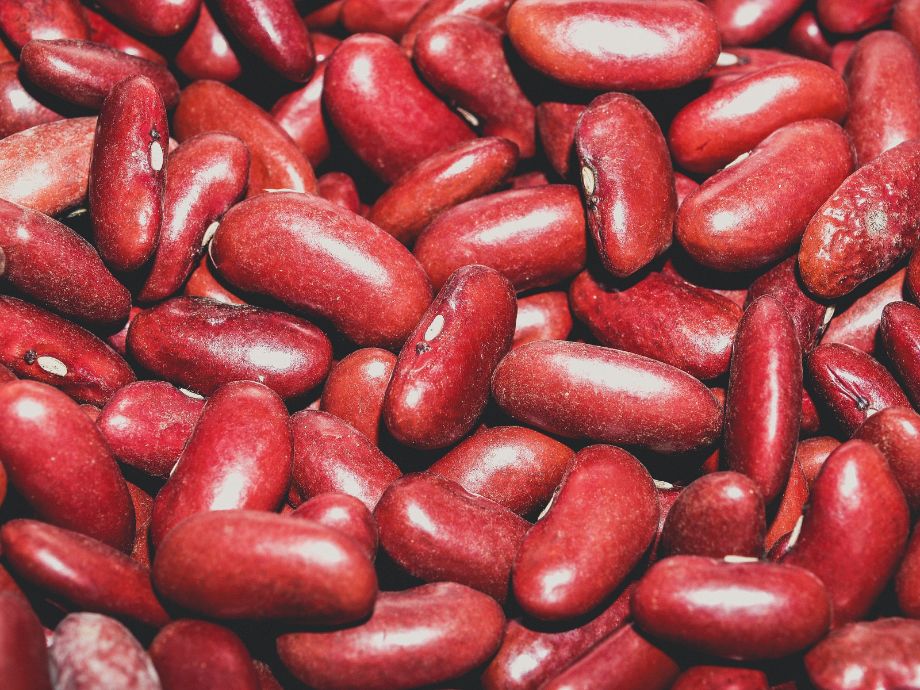
Some common plant-based protein sources that you can add to your meals include:
- Beans and legumes: Often considered carbohydrates, beans and legumes can add a significant amount of protein to your diet. Kidney beans, for example, have 26 grams of protein in a 3.5-ounce serving4. Other common beans and legumes that are higher in protein are lentils, black beans, and chickpeas.
- Soybeans: Soybeans are a complete protein, which isn’t always common in plant proteins. Containing all nine essential amino acids, these beans provide 36.5 grams of protein in 3.5 ounces4. Soybeans are also used to make edamame and tofu, two high-protein foods that are also great to add to your diet.
- Seeds: Seeds—like chia seeds, hemp seeds, or pumpkin seeds—can be a great topping for snacks like Greek yogurt or oatmeal. You can get 30 grams of protein in 3.5 ounces of pumpkin seeds4, for example.
- Hummus: Made from chickpeas, hummus can be a great dip to use with veggies. Although primarily carbs, hummus can still provide some protein (7 or 8 grams in a 3.5-ounce serving4), making it a great snack dip if you’re looking to get more protein.
11. Add Good Dairy Products
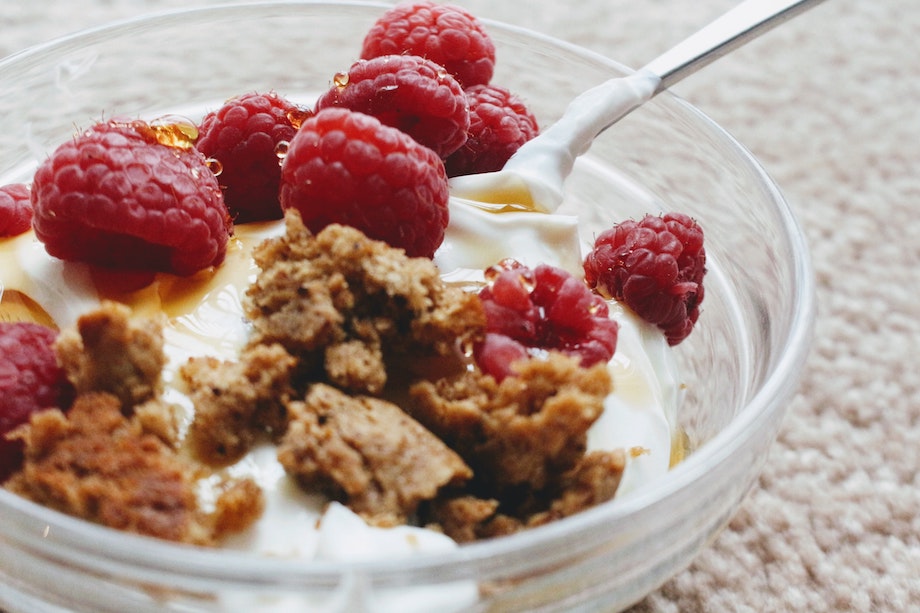
Unless you’re lactose-intolerant, dairy products can provide a decent source of protein if you’re still struggling to meet your daily intake. Additionally, dairy is a great source of calcium, essential in maintaining strong bones. Typically, the protein content is more for these proteins if you’re going with a low-fat or fat-free option, too. Good dairy products with decent protein content are:
- Skim milk, with 8.4 grams of protein in a cup
- Cottage cheese, with 11 grams of protein in 3.5 ounces of non-fat cottage cheese
- Mozzarella cheese, with 23.7 grams of protein in 3.5 ounces of cheese
- Plain Greek yogurt, with 10 grams of protein in 3.5 ounces of low-fat yogurt4
12. Swap Pasta With Quinoa
Pasta and rice can be carbohydrate-heavy dishes, so if you’re looking for an alternative, Meagan suggests switching out the pasta with quinoa. Another plant-based complete protein, quinoa can provide 12 grams of protein in a 3.5-ounce serving4.
13. Use Whole Grains Over Refined Grains
When possible, choose whole grains over refined grains. While both contain some protein content, refined grains can lose a lot of nutrients through the refinement process. To get the most nutrients in your diet to support your healthy eating, try to choose and use whole grains.
Benefits of Protein
So why are we making sure we are getting enough protein at each meal and during each day?
Muscle Growth
According to a December 2019 review5, in order to build muscle, your protein intake must be greater than the protein that breaks down in your body from exercise, training, or everyday life. If muscle-building is our goal, then we must make sure to replenish the protein lost with protein through our diet.
RELATED: Best Protein Powders for Muscle Gain
Muscle Recovery
Some studies have shown that protein can aid in muscle recovery after resistance training. A recent study from 20186 in particular had active women show signs of increased recovery across multiple metrics, simply from supplementing with whey protein after their workouts.
Weight Loss
While in a calorie deficit, research7 has shown that protein can help with weight loss simply by helping people feel more satiated after meals. Feeling full will help curb cravings and excessive snacking, helping you keep your calorie count on track while aiming for losing weight.
RELATED: Is Protein Powder Good for Weight Loss?
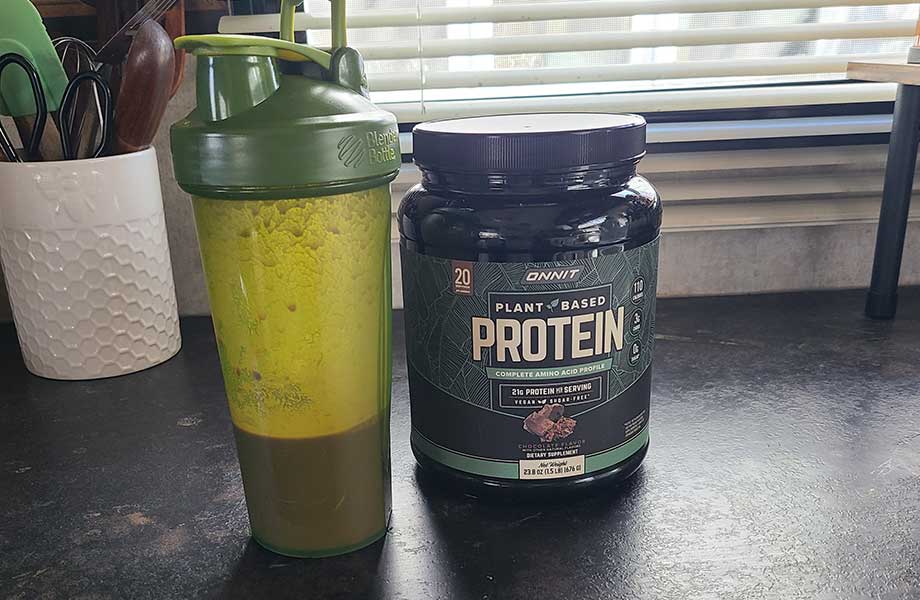
While trying to lose weight, Meagan also says, “Adequate protein helps you maintain lean mass while trying to drop mainly body fat.” If you’re trying to lose weight, protein is vital to help keep on as much lean muscle mass as possible.
How to Get More Protein: Final Thoughts
There are lots of ways to help get more protein into your diet. Here are a few key takeaways.
- Track your protein intake to make sure you’re getting the recommended amount of protein for muscle growth and performance: between 1.2 and 2 grams of protein per kilogram of bodyweight.
- Space your meals throughout the day to get the most out of your daily protein intake.
- Choose quality protein, like lean meats and complete proteins.
- Make smarter, protein-rich choices at breakfast, with snacks, and at meals throughout the day.
- Find little ways to substitute foods with high-protein alternatives to increase your intake.
How to Get More Protein: Q&A
What foods are highest in protein?
Some of the foods highest in protein content are animal proteins like beef, poultry, fish, and pork.
How can I increase my protein intake?
There are several ways to increase your protein intake. Some of the more basic tips are to make sure you’re having protein at every meal. Additionally, you can supplement with protein shakes or protein bars if you’re on the move a lot during the day.
How do I get more protein for weight loss?
It’s important to make sure that the additional protein you get while trying to lose weight isn’t adding excessive calories or other macronutrients to your diet. For this reason, a great protein powder to add for weight loss is whey protein isolate, which typically has very little fats or carbs, and a lower calorie content.
What are the benefits of getting more protein?
Getting a good amount of protein in your routine can have benefits such as aiding in building muscle, muscle recovery, and weight loss.
RELATED: Benefits of Protein
These statements have not been evaluated by the Food and Drug Administration. This product is not intended to diagnose, treat, cure, or prevent any diseases.
References
- Carbone JW, Pasiakos SM. Dietary Protein and Muscle Mass: Translating Science to Application and Health Benefit. Nutrients. 2019 May 22;11(5):1136. doi: 10.3390/nu11051136. PMID: 31121843; PMCID: PMC6566799.
- Kerksick CM, Arent S, Schoenfeld BJ, Stout JR, Campbell B, Wilborn CD, Taylor L, Kalman D, Smith-Ryan AE, Kreider RB, Willoughby D, Arciero PJ, VanDusseldorp TA, Ormsbee MJ, Wildman R, Greenwood M, Ziegenfuss TN, Aragon AA, Antonio J. International society of sports nutrition position stand: nutrient timing. J Int Soc Sports Nutr. 2017 Aug 29;14:33. doi: 10.1186/s12970-017-0189-4. PMID: 28919842; PMCID: PMC5596471.
- Yang ZH, Amar M, Sampson M, Courville AB, Sorokin AV, Gordon SM, Aponte AM, Stagliano M, Playford MP, Fu YP, Yang S, Mehta NN, Remaley AT. Comparison of Omega-3 Eicosapentaenoic Acid Versus Docosahexaenoic Acid-Rich Fish Oil Supplementation on Plasma Lipids and Lipoproteins in Normolipidemic Adults. Nutrients. 2020 Mar 12;12(3):749. doi: 10.3390/nu12030749. PMID: 32178279; PMCID: PMC7146314.
- FoodData Central; U.S. Department of Agriculture. Agricultural Research Center. Available from: https://fdc.nal.usda.gov/
- Krzysztofik M, Wilk M, Wojdała G, Gołaś A. Maximizing Muscle Hypertrophy: A Systematic Review of Advanced Resistance Training Techniques and Methods. Int J Environ Res Public Health. 2019 Dec 4;16(24):4897. doi: 10.3390/ijerph16244897. PMID: 31817252; PMCID: PMC6950543.
- Brown MA, Stevenson EJ, Howatson G. Whey protein hydrolysate supplementation accelerates recovery from exercise-induced muscle damage in females. Appl Physiol Nutr Metab. 2018 Apr;43(4):324-330. doi: 10.1139/apnm-2017-0412. Epub 2017 Nov 6. PMID: 29106812.
- Paddon-Jones D, Westman E, Mattes RD, Wolfe RR, Astrup A, Westerterp-Plantenga M. Protein, weight management, and satiety. Am J Clin Nutr. 2008 May;87(5):1558S-1561S. doi: 10.1093/ajcn/87.5.1558S. PMID: 18469287.
Further reading

Check out this Sole E98 Elliptical review to learn about a commercial-grade elliptical with a ton of great add-ons. Read more

It’s a bird. It’s a dog. It’s the bird dog exercise, the ultimate exercise for building core strength and stability! Read more

Not sure how to choose running shoes? Our handy guide will set you on the right track. Read more

For this Kaged Pre-Kaged Elite Review, we tested a pre-workout that has a reputation for being one of the highest in quality. Take a look at what we found. Read more

